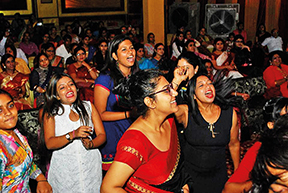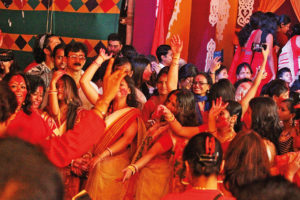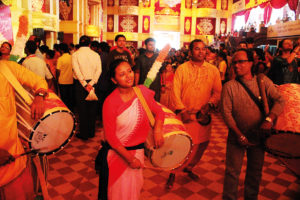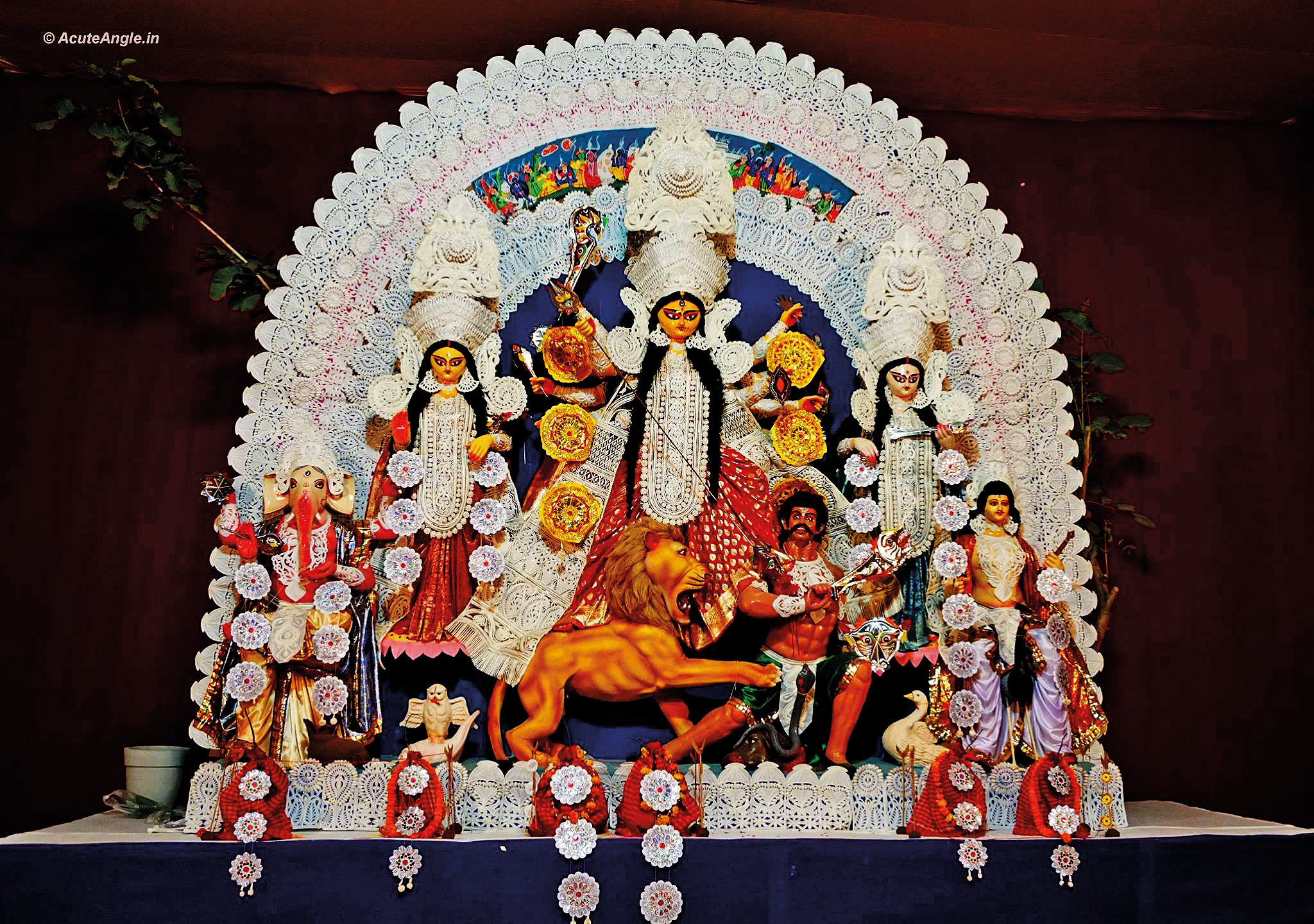Festivals like Durga Puja enable the youth to explore the world, gain more confidence and maturity. they lead to more gender, social and economic empowerment
“Let’s meet tonight. I will be with my parents, but they will go home soon. Will ping you then,” texted Maitri (name changed) to her friends’ WhatsApp group. She is a graduate, married and employed. Yet, she hardly gets a chance to meet school friends. Weekends are spent with the family and, on weekdays, she goes to work and returns home directly. Although it isn’t barred, a late night is almost impossible. The one exception: the four days of Durga Puja. This year, she visited her parents, her first visit since marriage, and visited different pandals with them. That night, the day she WhatsApped, she met the two friends, both unmarried. They hung out, and talked for hours till 2 AM, until they were tired and sleepy.
This is just one part of the story of the Great Indian Middle Class. Despite the empowerment — gender, social, and economic — the trappings of most middle-class families are clear. The attitudes are still male-dominated, conservative, and against women mobility, although these are quickly breaking down in some sections. Hence, religious festivals, be it Durga Puja, Dandiya, or Ganesh Chaturthi, offer the young and old to break out of their self-imposed, self-accepted, or external barriers. In fact, there is all-round encouragement to move out, mingle, and explore oneself.
In Delhi, Chittaranjan Park (CR Park), which largely houses Bengalis, is the hub for Durga Puja. On normal days, the markets shut down at 9 PM. Today (September 26) was Shubho Shoshthi (first day of the Puja) and, at 9 PM, the market was still crowded. After few hours, the elderly vanished, and the youngsters took over till at least 1 AM. Shubhi Bannerjee, who stays at Rohini and comes to CR Park during Puja, told Patriot, “I don’t have any curfew hours at home, Bengalis generally don’t. But, during Puja, no one from home is constantly checking with me. Plus, all of us (mixed-gendered friend circle) ensure our availability during these days.”

This is why, chuckles Lipika Barua (name changed) as she says, “The same culture that restricts us throughout the year becomes an excuse (for us to go out) on these few days.” In fact, for her, these are the most important days in a year. As a child, she would mark the dates on a calendar at the beginning of each year, and start counting the days left. As she grew up, Puja became the days for shopping and trying new clothes. She wore traditional with her family, and western with friends. In the end though, it wasn’t about clothes, but about her personality.
“I guess those were the days when we evolved from dressing weirdly to being decently attired,” explains Lipika. However, the change possibly reflects the evolution of a personality and character. Amitabh Shah, a Delhi-based psychiatrist, agrees. “Most of the festivals help to improve the overall confidence in individuals as well as communities. It brings the people together.” This is more crucial in today’s world, when most people don’t have the time, as they juggle between professional and personal responsibilities and tasks. This is the time for people, especially the youngsters, to hop and jump out of their ‘comfort zone’, imposed or deliberate, and forge new, external relationships.

Some of these relationships can be serious, intense, and long-term. Explains Aparna Chatterjee, who is doing her post-graduation from Delhi University: “(As a teenager), I got most proposals during Puja days. I notice this trend even now. In conversations, we discuss how the present is a mere reflection of the past.” But the more important aspect of the festivals is the manner in which they force the youth to assume more responsibility, and become mature. For example, it is the younger generations, in their 20s and 30s, who supervise the pandals in CR Park.

Festival or no festival, the parents of teenagers obviously grapple with contradictory feelings and emotions. Take the case of Suparna Chatterjee, Aparna’s mother. “We do not enjoy restricting our kids. We also want them to learn their own way and explore — there’s so much to learn about this world,” she admits. But in the same breath, the mother sets down the ifs, buts, and the caveats.
Obviously, one cannot be oblivious of what’s happening across the country. Living rooms and bedrooms are bombarded daily with ‘bad’ news. TV channels, newspapers, social media crowd us with stories of violence, especially the ones against the women. “I trust my children. But how can I guarantee the conduct of others?” she asks. This is why she is also strict with her kids during Puja. “I won’t allow my daughters to go outside the residential area. I don’t check with her if she assures me that she will be in CR Park.” She is happy that the Delhi Police is especially vigilant in the area during Puja. There are restrictions on the entry of ‘outside’ vehicles, and even people are checked sometimes. Hence, she is at peace.





